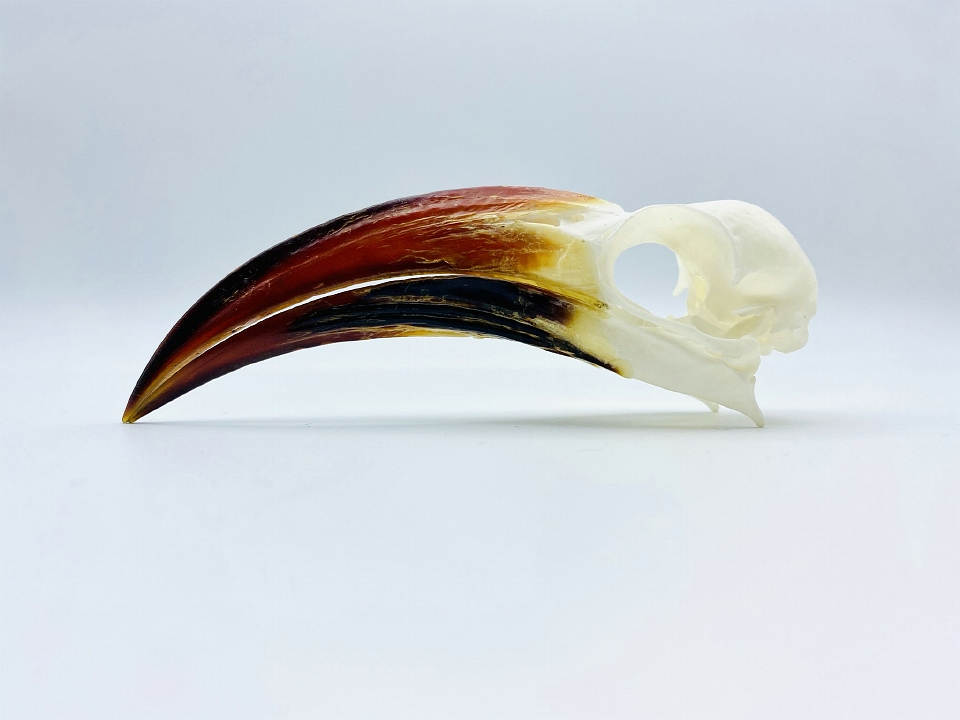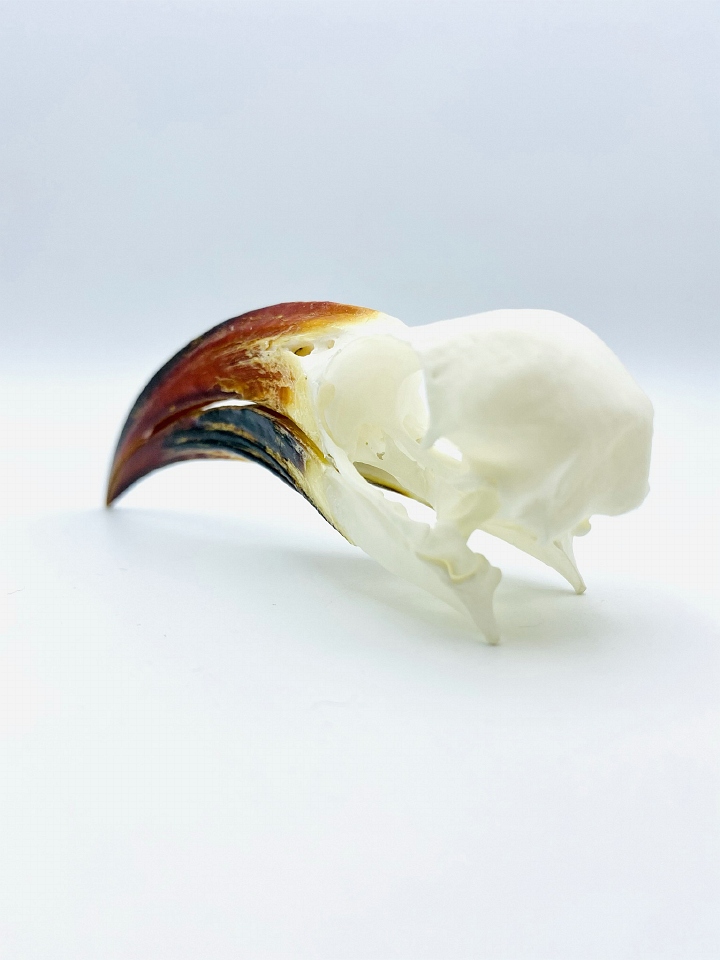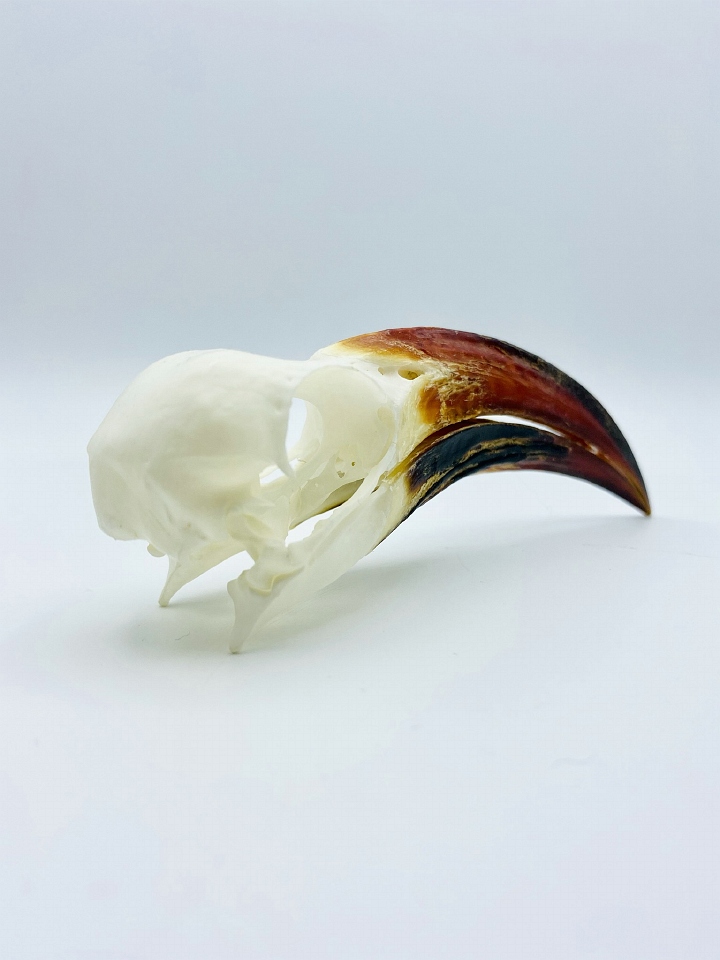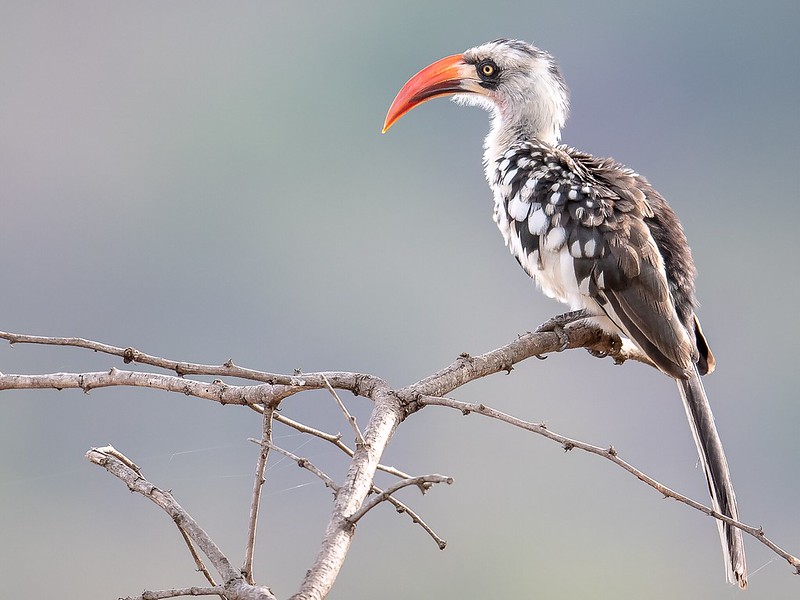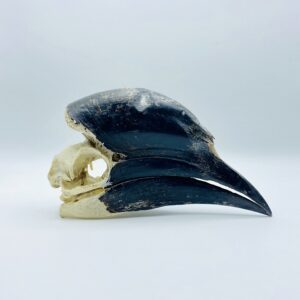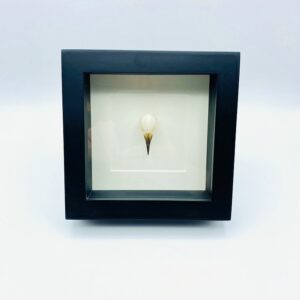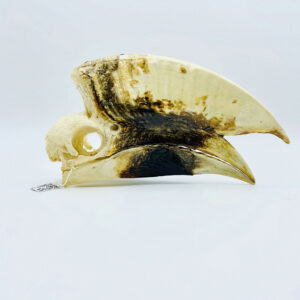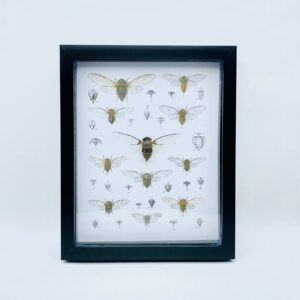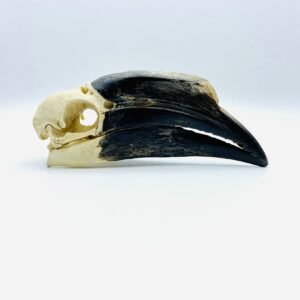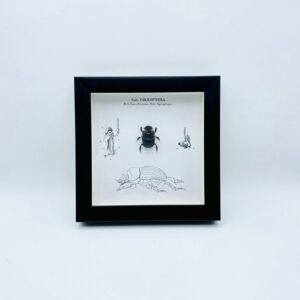Description
Tanzanian red-billed hornbills (Tockus ruahae) are small hornbills in the group of the red-billed hornbills. They have curved, bright red bills that end in a small dot of dark orange. Their sclera can vary from light orange to dark yellow and their pupils are usually dark black. Like most species of hornbills, they support medium-sized circles of black skin around their eyes, both in females and males. They have greyish-white necks and bellies and their wings, like all red billed hornbills, have large and small spots of white surrounded by black feathers. Their tail feathers are long and black on the exterior and white on the interior.
The red-billed hornbills are a group of hornbills found in the savannas and woodlands of sub-Saharan Africa. They are now usually split into five species, the northern red-billed hornbill (Tockus erythrorhynchus), western red-billed hornbill (T. kempi), Tanzanian red-billed hornbill (T. ruahae), southern red-billed hornbill (T. rufirostris) and Damara red-billed hornbill (T. damarensis), but some authorities consider the latter four all subspecies of Tockus erythrorhynchus.



